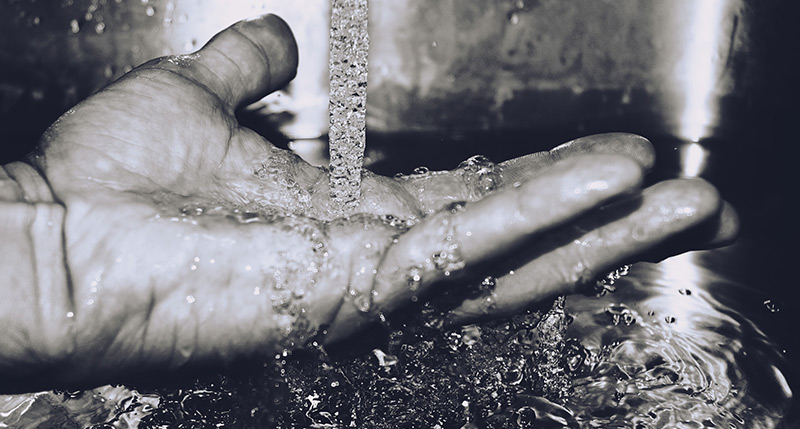For most of us, breaking a sweat is nothing unusual. We perspire when it’s hot, when exercising, or when we’re stressed. Sweating is a normal bodily function that barely registers on our radar. But for those who suffer from hyperhidrosis, sweat is a serious concern that negatively impacts daily life.
Affecting roughly 3% of the population, hyperhidrosis, or excessive sweating, is characterized by significant sweating when the body does not need to be cooled. More common in women than in men, symptoms can range from mild to severe and may occur in one or more areas of the body. Common problem areas include the palms, feet, underarms and hairline.
Recurring excessive sweating can become so extreme that it interferes with daily tasks or activities. Imagine trying to shake hands, turn a doorknob, dress your child, or navigate electronic devices with sweat dripping from your palms, and you’ll have a glimpse into the daily challenges of individuals with hyperhidrosis.
Those with the condition face social and emotional challenges as well. Sweating profusely when no one else is can be frustrating and embarrassing. Physically, sufferers face unique challenges as well. Due to moisture continually sitting on the skin, affected areas may peel, or the skin in the affected area may discolor. Excessively moist skin also puts individuals with hyperhidrosis at higher risk for skin infections such as athlete’s foot.
WHAT CAUSES EXCESSIVE SWEATING?
With over 15 million people in the US sweating four to five times more than the rest of the population, hyperhidrosis is surprisingly common. But the reason for the condition varies. While symptoms are the same, the root cause of the condition divides people living with hyperhidrosis into two groups.
Some who struggle with hyperhidrosis can point to no obvious reason for their excess sweat production. When no clear cause is identified, the diagnosis is “primary focal hyperhidrosis.” Though research is ongoing, some suspect that the eccrine sweat glands, found in the millions all over the body, are overstimulated by the nervous system, causing them to produce excess sweat in specific areas. Others believe there is a genetic component since the condition often runs in families. Still others believe excessive sweating is caused by an unusually high toxic load in the body, which the body works overtime to purge via sweating. Regardless, those with primary hyperhidrosis usually begin sweating excessively before age 25, sweat profusely on more than one area of the body, and experience similar symptoms bilaterally (on both sides of the body).
When hyperhidrosis can be traced to an underlying root cause, it is known as “secondary generalized hyperhidrosis.” Excessive sweating can be caused by certain medications and underlying medical conditions; in these cases, hyperhidrosis is more of a side effect or symptom than the primary issue. To reduce secondary sweating, the underlying cause must be identified and addressed. Common triggers for secondary hyperhidrosis include obesity, hyperthyroidism, menopause, anxiety, gout, diabetes, and prescriptions such as antidepressants. Infections of the blood, lymph nodes, or endocrine system may also contribute.
NATURAL REMEDIES FOR HYPERHIDROSIS
While western medicine offers treatments for excessive sweating including Botox, electric current therapy, electromagnetic heat and destruction of sweat glands, pharmaceuticals and surgery, those who seek a non-invasive, long-lasting solution may consider more natural alternatives.
For underarm sweating specifically, there are a variety of products on the market. Unfortunately, most commercially available antiperspirants contain aluminum or zirconium. Both of these active ingredients prevent sweating by physically blocking the sweat glands, leading to possible subsequent health issues. Rather than blocking the sweat altogether, opt for an aluminum-free deodorant to address odor, and look for ways to reduce excessive sweating.
Since sweating can be stimulated by hormone imbalance, heavy toxic loads, overloaded adrenals, high levels of inflammation, intense fear or anxiety, or extreme stress, seek to detoxify and stabilize the body while supporting overall health. For anxiety or fear-driven sweating, cognitive behavioral therapy (CBT) can help relieve symptoms by encouraging patients to shift thought patterns and reactions to stress. Other stress-relieving activities, such as yoga, meditation and journaling, can also be incorporated into a daily routine as a way to calm the body and mind.
While there are a variety of natural ways to reduce sweating and handle the physical, mental and emotional challenges of hyperhidrosis, you don’t have to walk the path alone. If you think you may have hyperhidrosis, consult with your healthcare practitioner to identify the best course of treatment.

